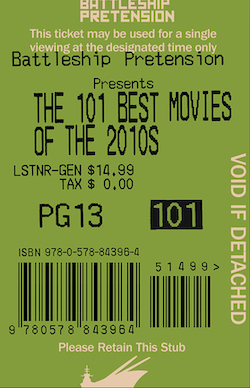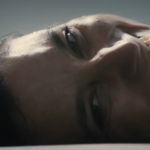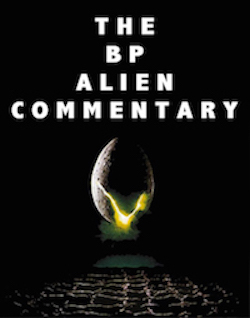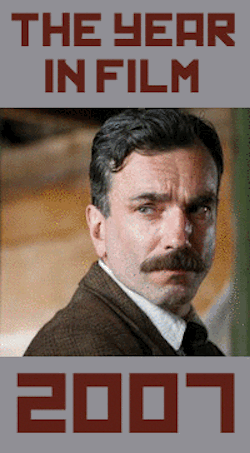Home Video Hovel: The Mack Sennett Collection Vol. One, by Scott Nye
This is where it all began. In the true American spirit, Mack Sennett built up his name, then built his own damn studio. He gathered some of the best talent in the business (providing key opportunities for – among others – Charles Chaplin, Mabel Normand, Gloria Swanson, Roscoe “Fatty” Arbuckle, Harold Lloyd, Bing Crosby, Carole Lombard, and W.C. Fields), and many who would not rise to as prominent a stature, and let them run absolutely wild across the area of Los Angeles now known as Echo Park. Many of the trademark elements of silent slapstick comedy – the Keystone Kops, the villain tying a love interest to railroad tracks, the relative harmlessness of mass explosives, and pie fights – came up under Sennett’s watch. Many others are too insane to be duplicated. One film climaxes with a man and a monkey holding on for dear life to an explosive piano as it rolls down a hill. If you were willing to put yourself in harm’s way for a laugh, Mack Sennett could put you to work, and the sheer surprise alone of many of the gags kept me doubled over with laughter. Flicker Alley has gathered the best of them for this 3-disc Blu-ray edition, nearly 17 hours (50 films altogether) of the wildest live-action comedy you’ll ever see.
The films range in length from the split-reel 6-minute shorts to a full 72-minute feature, beginning in 1909 and concluding in 1933, from Biograph (where Sennett came up in the industry) to Keystone to the Mack Sennett Comedies Corporation. Within the span of these twenty-five years, the viewer sees an entire (d)evolution of a medium, where increased running times forced more focus on story development. The early, short films conclude before the rules could ever catch up with them; it becomes harder to attempt a mad dash towards the finish line in a longer race. Films like On His Wedding Day, Bangville Police, The Curtain Pole, The Thief Catcher, A Bird’s a Bird, and Do-Re-Mi-Boom! could take one joke, more or less, and pound away relentlessly at it until there was (sometimes literally) nothing left. At their best, the level of anarchy rivals what the boys at Termite Terrace would do in the 1930s and 40s with the Looney Tunes shorts. Like them, the early Mack Sennett films were produced so quickly and cheaply that there was hardly a moment in the production to second-guess their lunacy. Sudden inspiration wins the day.
Greil Marcus coined the term “the old, weird America” in talking about folk music in the late 1920s and early 1930s, but there’s something of that idea in these Sennett shorts. Even for the time, the costumes and hairstyles were greatly stylized, but not so much so that there isn’t an element of truth to their use. They often depict outsiders, self-fashioned renegades living on the edges of society whose headstrong stubbornness causes comedic chaos. The stars I noted at the top are some of Sennett’s more notable players, but performers like Ford Sterling, Fred Mace, Mack Swain, Louise Fazenda, and Chester Conklin were just as instrumental, if not more so, in building Sennett’s wild and wily world. No joke was too outlandish, no question of good taste ever uttered.
And I don’t want to give the impression that the later, longer works are not worthwhile. Not at all. A few drag, to be sure, but most take on a whole other dimension from the earlier works. There’s a 30-minute Fatty Arbuckle/Mabel Normand film from 1916 on here called Fatty and Mabel Adrift that is as gorgeous a piece of contemporary fantasy as they come. It has plenty of jokes all its own, but the emphasis is more ethereal, more beautiful than any of the other Sennett shorts. The critical temptation is to say it “transcends” Sennett, but that would mean debasing the considerable accomplishments of the others.
Similarly, by the time we get into the early sound era, a different sort of Sennett film emerges. Don’t Play Bridge With Your Wife is mostly a familiar sort of Pre-Code marital comedy, but it also begins with cavemen (and -women) playing prehistoric bridge while their pet dinosaur watches. The sole color film in the set, The Bluffer (filmed in Sennett Color!), involves scaring people with a dead shark. The pace may be slower, but a certain sense of humor remains.
The presentational quality of these films vary wildly. Some came from the Library of Congress, the Museum of Modern Art, the Academy of Motion Pictures Arts and Sciences, and other renowned institutions. Many others came from private collectors. In any event, these won’t be what you reach for when you want to show off your home entertainment system. They’re plenty damaged, a few frames missing here or there (though for the age and lack of care many of these films received early on, neither are as intrusive as I expected), and clarity especially varies quite a bit. I suspect the Blu-ray format was chosen more for the capacity a single disc has in holding data compared to a DVD than it was for bringing out the best in any individual film. Nevertheless, getting them is the main thing, and the quality is never bad enough that you don’t know what you’re looking at. They seem to look as good as their sources would allow.
If 17 hours of silent comedy gold isn’t enough to sell you, Flicker Alley have included quite the roster of supplements, from TV specials on the films and Sennett to outtakes to behind-the-scenes footage of Sennett’s studio to radio appearances to footage from Sennett’s 70th birthday party. New piano accompaniment tracks are provided for all the silent films, and commentary tracks (from experts, enthusiasts, archivists, and collectors) are included for about half of them.
I really can’t say enough good things about this set; it’s been a joy to go through, each new film bringing some unexpected delight, and the commentaries really push it over the edge to something truly special. Too often the silent era (especially pre-1920) gets cast off as its own little amusement park, without considering that there were decades of groundbreaking cinema being made, at a time when, truly, the limits and expectations of the medium were boundless. I am so pleased that Flicker Alley has made these films widely available, and can only hope that the “Vol. One” tag means it is only the beginning of many treasures to come.































